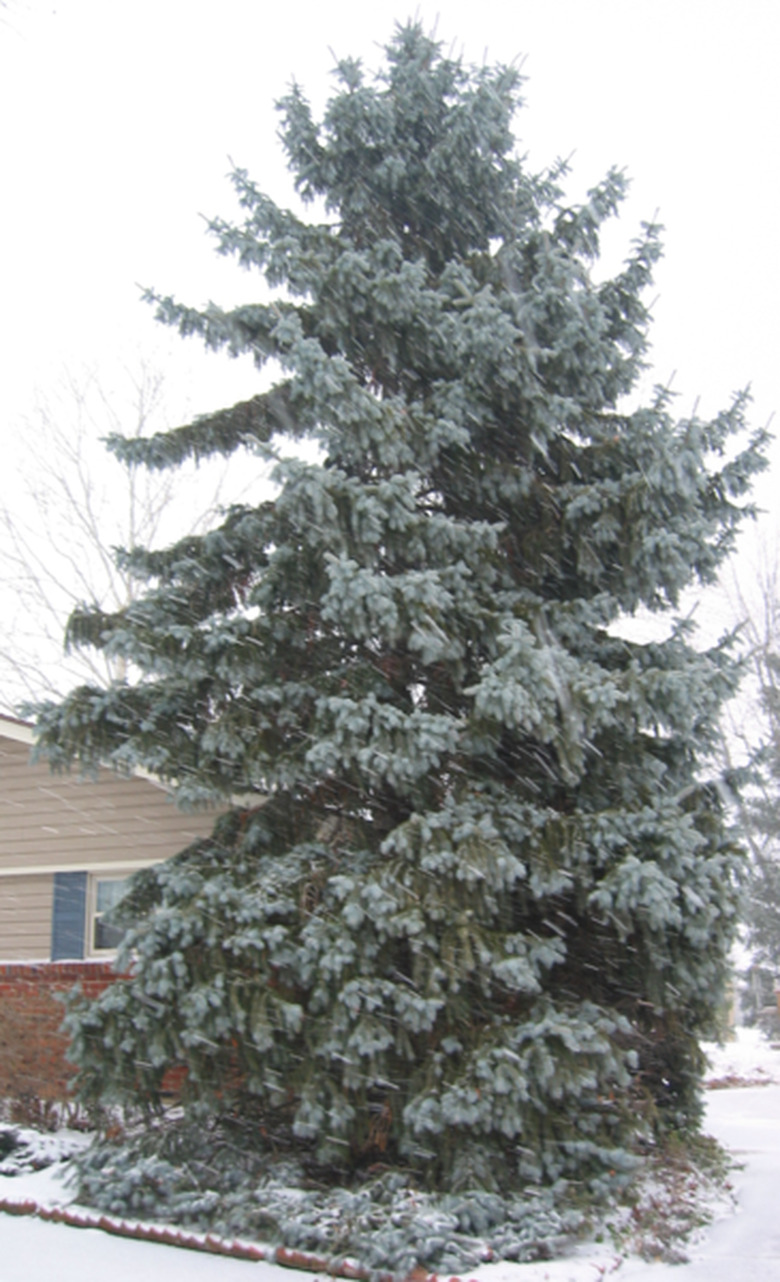How To Prune Blue Spruce
Things Needed
- Lopping shears
- Pruning saws
- Ladder (if needed)
- Sharpening tools (if needed)
- Household bleach
- Water
- Safety goggles
- Gloves
- Protective wear
- Hard hat
Warning
Do not use a pruning sealant, because this provides a place for bugs to hide. When pruning a tree, you should always wear safety equipment such as safety goggles, gloves and protective wear, and a hard hat.
Like many pine trees, the Colorado blue spruce is a naturally cone-shaped variety. It is hearty through most of the northern United States and in the alpine regions of the Rocky Mountains. This conifer is characterized by dense silver blue-green needle-like foliage. It may grow into a column that is up to 75 feet high and 25 feet wide. The blue spruce does not need pruning for artificial shaping, as it has a naturally pleasing shape already; instead, it is usually pruned to remove diseased limbs.
Step 1
Wait until the winter months to prune a healthy tree. This minimizes the amount of sap that the tree will "bleed" and protects the tree from bugs and disease. If your tree has diseased or bug-infested branches, prune those at any time.
- Like many pine trees, the Colorado blue spruce is a naturally cone-shaped variety.
- The blue spruce does not need pruning for artificial shaping, as it has a naturally pleasing shape already; instead, it is usually pruned to remove diseased limbs.
Step 2
Select the proper tools for cutting individual branches. Lopping shears are appropriate for branches less than 1 inch in diameter; pruning saws are suitable to use on larger branches. If pruning larger trees, use a ladder.
Step 3
Ensure that all of your cutting tools are properly sharpened. This will help avoid splintering or pinching of the wood.
Step 4
Mix a sterilizing solution of 9 parts water and 1 part household bleach to clean your cutting tools. Sterilize tools after every pruning session, whether pruning healthy trees or removing diseased branches.
- Select the proper tools for cutting individual branches.
- Sterilize tools after every pruning session, whether pruning healthy trees or removing diseased branches.
Step 5
Put on your safety gear, including safety goggles, gloves, protective wear and hard hat.
Step 6
Shape your tree and remove diseased limbs with a thinning technique. This technique removes entire branches at the trunk rather than cutting the tips off branches. Select branches that are too long for the tree's natural shape, and lop them off at the trunk of the tree. Make a clean, angular cut just outside the branch collar (the portion of the branch that attaches to the trunk). Start just outside the bark ridge in the fork of the branch and angle your cut down and away from the trunk of the tree.
Step 7
Avoid shaping the tree by cutting the tips of branches, which is known as tipping, or by cutting the entire top off of your tree, which is known as topping. Tipping or topping can make the tree unhealthy and allow bugs or disease to get into the tree.
- Put on your safety gear, including safety goggles, gloves, protective wear and hard hat.
- Select branches that are too long for the tree's natural shape, and lop them off at the trunk of the tree.
Step 8
Thicken new growth by pinching off half of the 2 inches of new growth with your fingers once you have finished thinning your tree. This new growth is called the candle of growth on the tree.
